Would an Osmium Ring Be Dangerous to Wear?
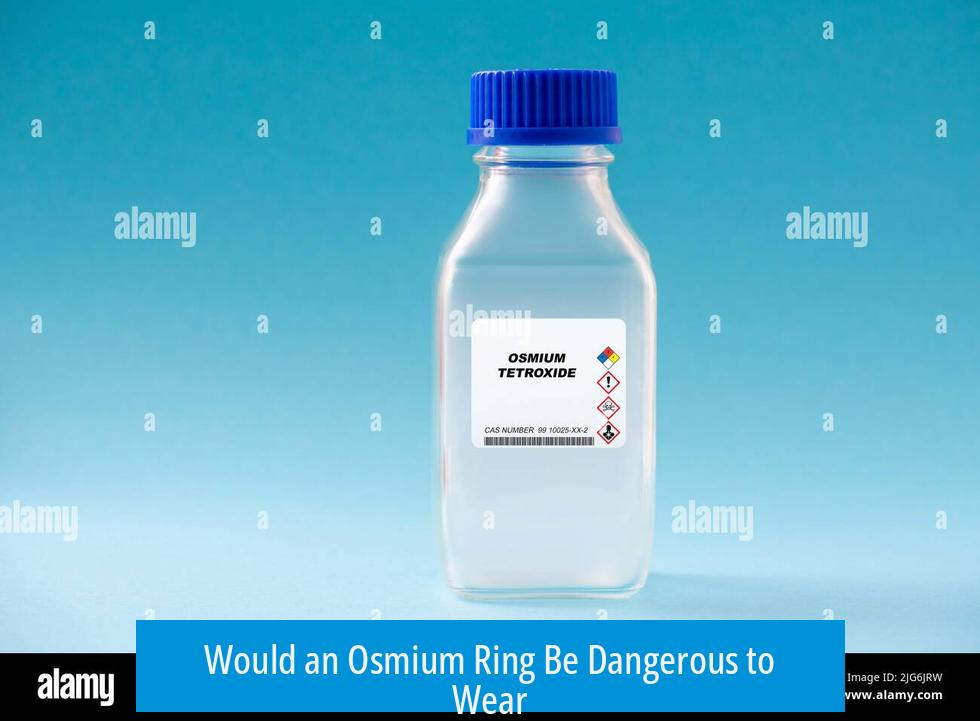
Wearing an osmium ring is generally safe because bulk osmium metal is highly stable and does not produce significant amounts of toxic osmium tetroxide under normal conditions. The toxic risks associated with osmium arise mainly from its powdered form or fine particles, not from solid metal. Bulk osmium oxidizes extremely slowly, making any toxic exposure negligible during a human lifetime.
Understanding Osmium’s Reactivity and Oxidation
1. Stability of Bulk Osmium Metal
Osmium, a dense transition metal, shows remarkable chemical stability when in bulk form. It does not appreciably react with oxygen or other atmospheric components at room temperature.
- Experiments demonstrate that solid osmium withstands boiling aqua regia—a corrosive acid mixture—without significant degradation.
- Oxidation of solid osmium to its tetroxide form occurs at an imperceptible rate: only a few nanograms per year.
- It would take approximately one million years for half a gram of osmium metal to oxidize into osmium tetroxide under ambient conditions.
This very slow oxidation implies that, for all practical purposes, an osmium ring made from bulk metal will not generate enough toxic osmium tetroxide to cause harm.
2. Formation and Toxicity of Osmium Tetroxide (OsO4)
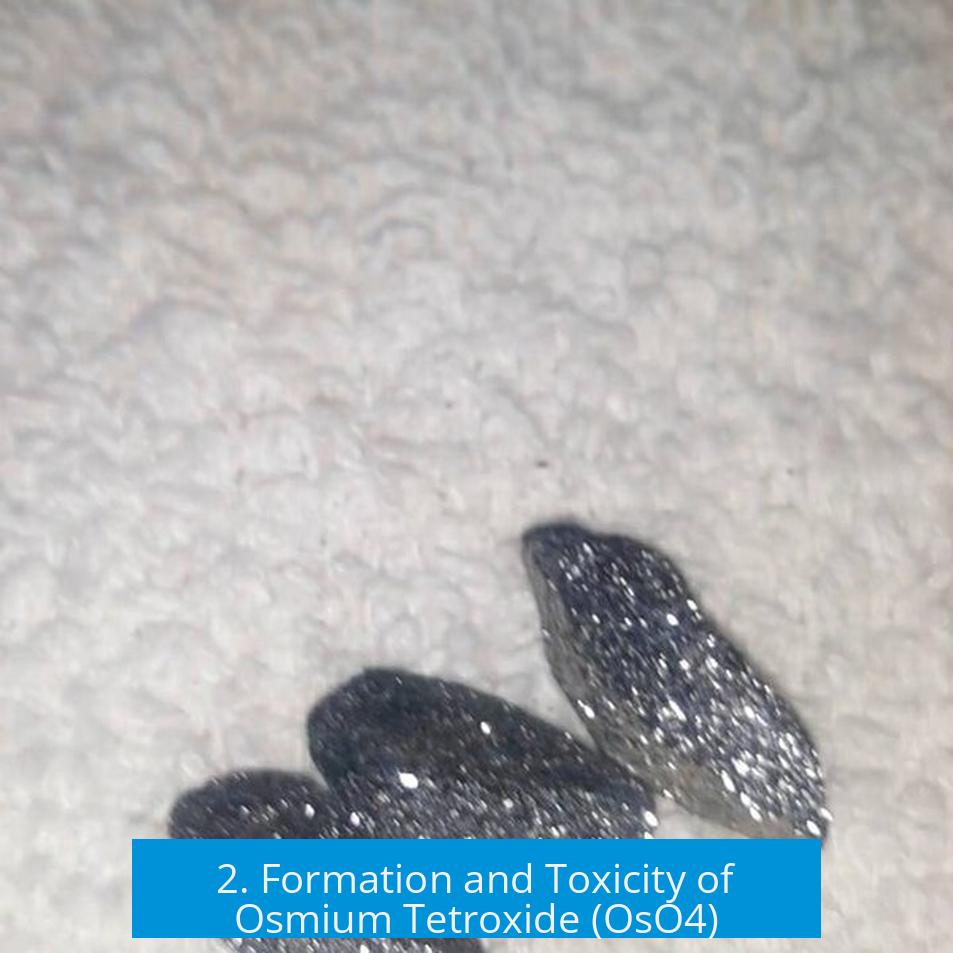
Osmium tetroxide (OsO4) is the toxic compound of concern because it is a strong oxidizer and volatile, posing risks mainly if inhaled.
- OsO4 forms rapidly from powdered or finely divided osmium when exposed to air.
- This highly reactive compound can irritate skin, eyes, and respiratory tract in sufficient concentrations.
- However, the solid bulk metal surface hardly produces OsO4, making direct exposure through an osmium ring negligible in toxicity.
Thus, toxicity risks are primarily associated with handling osmium powder rather than wearing bulk osmium jewelry.
Safety of Wearing Osmium Jewelry
1. Skin Contact and Exposure Risks
Empirical experiences show that osmium jewelry in contact with human skin is safe.
- Individuals have reported wearing raw osmium rings and pendants for years without adverse effects.
- Continuous skin contact does not promote sufficient oxidation to form dangerous OsO4.
- Scientific tests on osmium corrosion corroborate these findings, confirming its inertness under ordinary conditions.
Overall, data and anecdotal evidence align: wearing osmium rings is not dangerous due to minimal chemical reactivity.
2. Potential for Toxic Exposure via Oxidation
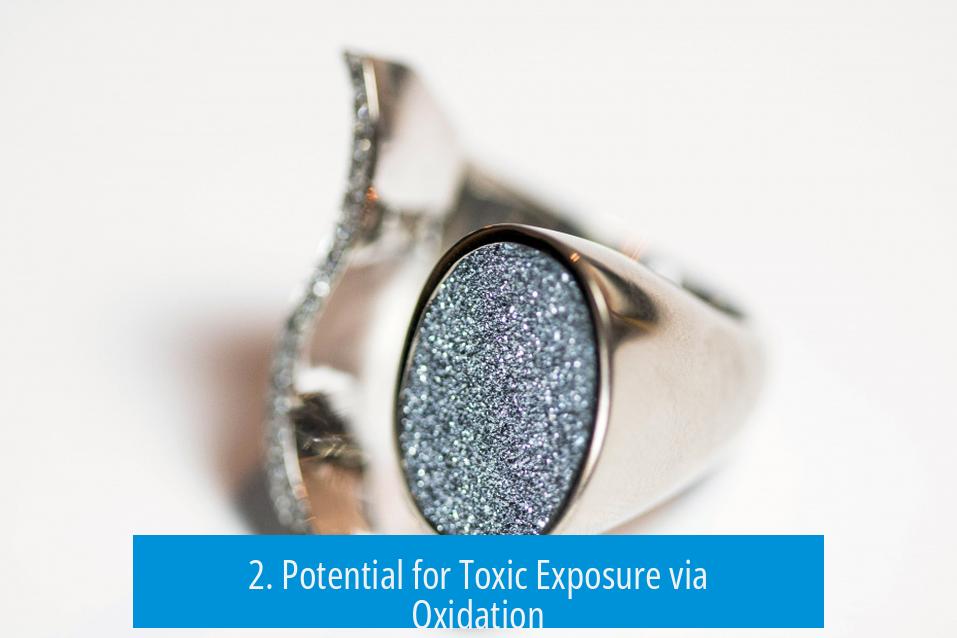
- Oxidation to OsO4 from bulk osmium occurs at a rate measured in nanograms per year, an amount too low to pose measurable health risks.
- This minuscule oxidation is insufficient to generate toxic vapor concentrations near the skin or in the breathing zone.
Hence, osmium rings do not release harmful oxides during typical use.
Protective Measures to Minimize Risks
1. Coating of Osmium Rings
Although bulk osmium is stable, some prefer additional safety by applying surface coatings to prevent oxidation entirely.
- Inert coatings such as thick glass, alumina, or transparent plastics act as barriers against oxygen diffusion.
- These coatings can enhance durability and prevent any possible minimal oxidation, even under harsh conditions.
- There is a potential for oxygen diffusion through coatings over long periods, but this remains negligible.
2. Alloying Osmium for Safety
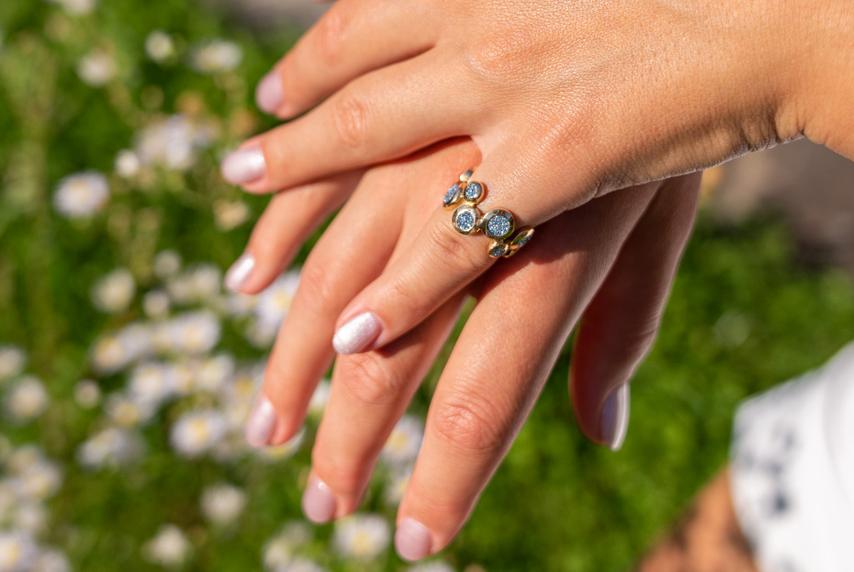
Another strategy includes alloying osmium with a sacrificial anode metal like zinc.
- Creating zinc-osmium alloys can reduce oxidation risks through galvanic protection.
- Zinc serves as an anode and preferentially oxidizes, protecting osmium.
- Such alloys require periodic zinc replacement due to consumption, limiting practical use.
Both coating and alloying provide additional layers of safety, although the inherent stability of osmium may make these excessive for casual wear.
Practical and Financial Considerations
1. Cost Implications
- Osmium ranks among the most expensive metals, often valued much higher than gold per gram.
- Its high density means a ring requires more mass to match the size of gold or silver rings, escalating the cost.
- This cost factor limits osmium’s practicality for everyday jewelry.
2. Appearance Alternatives
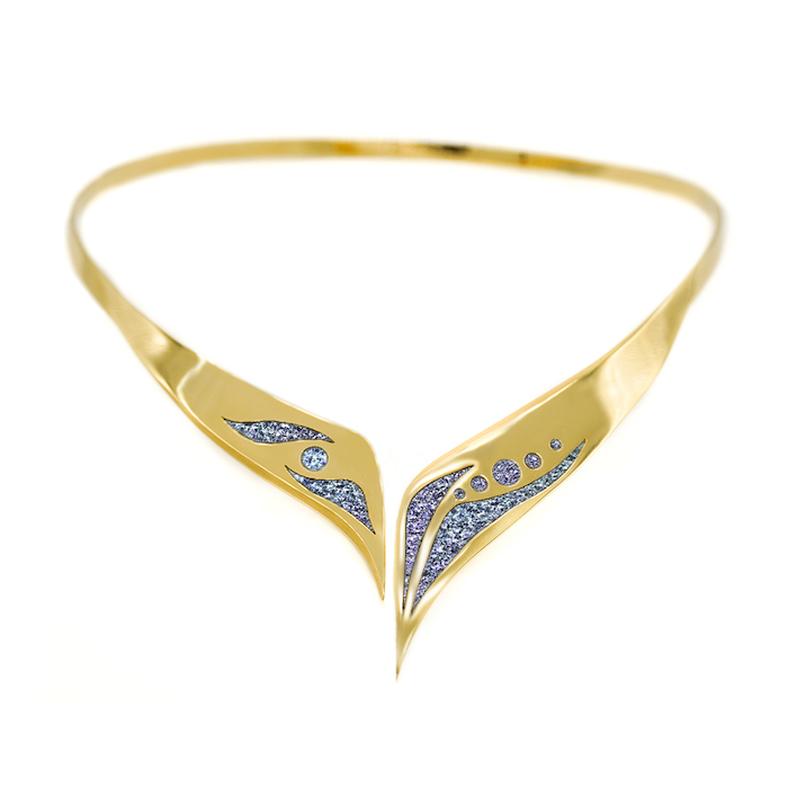
- Anodized titanium jewelry provides similar aesthetic appeal with multiple color options.
- Titanium alloys are far less expensive, lightweight, and inherently safe to wear.
- These options suit those attracted to osmium’s look but wary of cost or rarity.
Common Misconceptions About Osmium Jewelry
1. Misunderstood Reactivity
Many misunderstand osmium’s chemical behavior due to confusion between powdered and bulk forms.
- Some online sources exaggerate osmium’s toxicity based on misinformed assessments of OsO4 risks.
- Scientific data consistently show that solid osmium’s oxidation is negligible over human timescales.
2. Fragility Concerns
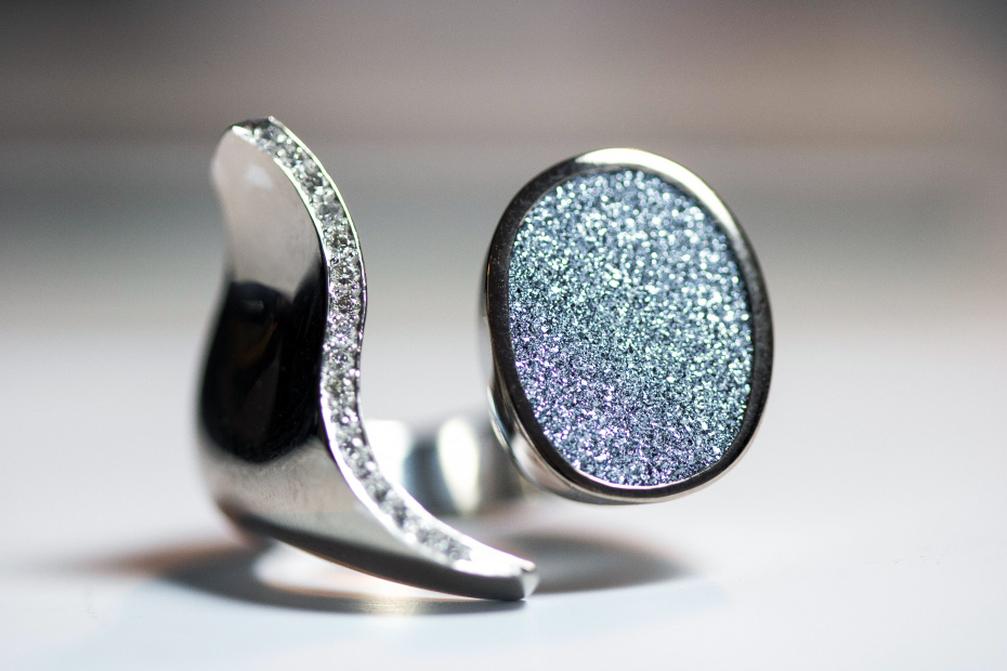
There is some speculation about osmium being too fragile for jewelry but lacking detailed evidence.
- Osmium is hard and dense but also brittle compared to other metals.
- Brushing or impact could damage unprotected osmium rings, but this is a mechanical issue, not a toxicity problem.
3. Online Commentary on Oxidation Risks
- Online forums mention osmium rings coated with protective materials to prevent oxidation.
- These coatings reduce any minor oxidation fears but do not negate that uncoated bulk osmium is already safe.
Summary of Key Points
- Bulk osmium metal is stable and does not significantly oxidize to toxic osmium tetroxide under normal use.
- Wearing osmium rings directly on the skin poses no meaningful exposure risk to OsO4.
- Powdered osmium is hazardous; solid osmium is not.
- Protective coatings or alloys can further reduce oxidation but are optional for everyday wear.
- Osmium’s high cost and density limit its practicality for jewelry compared to cheaper alternatives like anodized titanium.
- Common misconceptions about osmium’s reactivity and fragility persist but are mostly unfounded.
Would an Osmium Ring Be Dangerous to Wear? Let’s Clear the Air
The short answer: No, an osmium ring would not be dangerous to wear. Bulk osmium metal is stable and practically unreactive in normal conditions. The fear surrounding osmium toxicity mostly comes from misunderstandings about a rare compound it can form—osmium tetroxide (OsO4). But here’s the scoop on why that fear is largely overblown, along with some practical and fun facts about this curious metal.
Imagine wearing a ring made from one of the densest, rarest metals on Earth. Sounds fancy, right? Osmium is a heavyweight champion—literally. But before you rush online to buy an osmium ring, let’s explore what it really means for your fingers, health, and pocketbook.
The Truth About Osmium’s Reactivity (or Lack Thereof)
Many people worry that osmium metal reacts with air to form toxic osmium tetroxide gas. This compound is indeed highly poisonous and smelly (think garlic and chlorine-ish notes). But here’s the kicker: that problem only arises with finely divided osmium powder, not the solid metal ring on your finger.
Bulk osmium is remarkably stable. It doesn’t react noticeably with oxygen, and it certainly won’t spontaneously produce dangerous amounts of OsO4 while you wear it.
“This is not seen as a practical danger. The measured oxidation rate is in nanograms per year. It would take one million years for half a gram of osmium metal to oxidize.”
So while OsO4 might be a villainous troublemaker in chemistry labs, your osmium ring isn’t moonlighting as a poison factory.
Wearing Osmium: Safety and Comfort
Here’s a fun fact: Some people have been wearing pure osmium jewelry for years without any issues. Take Rasiel from Luciteria, for instance—he sports a raw osmium ring against his skin. The author of one detailed test report has worn an osmium pendant for years with zero toxicity signs or skin reactions.
If you’re wondering whether an osmium ring will harm you, the evidence says “no.” That said, there are those who recommend coating the ring for extra precaution. Thin coatings of glass, alumina, or transparent plastic can further block any oxygen interaction. This is more about long-term preservation than immediate safety.
Another interesting idea is alloying osmium with elements like zinc. The zinc can act as a “sacrificial anode”—a safety net protecting the metal from oxidation. But alloys come with their own upkeep, such as replacing zinc over time.
What About Fragility? Is Osmium Too Brittle for Daily Wear?
This is a common question. Osmium is dense and hard, but opinions vary on its fragility. Unlike some brittle metals, osmium tends to be quite robust. However, there’s no detailed scientific consensus on osmium brittleness specifically related to jewelry wear. So, if you’re rough on your rings, maybe test carefully or consult a jeweler specializing in exotic metals.
Practical Concerns: Price and Appearance
Here’s the less dazzling side of osmium rings: the price. Osmium is expensive—many times more costly per gram than gold. Plus, because osmium is so dense, an osmium ring weighs more than the usual silver or gold ring of the same size. Your finger could end up wearing a mini weightlifter.
Fortunately, if you want an osmium look without the budget shock, anodized titanium is a great alternative. It mimics osmium’s color variety, offers great durability, and is much cheaper and safer to wear.
Why the Confusion and Fear About Osmium?
Honestly, the mixed opinions and sometimes contradictory advice come from how little most people know about this rare metal.
“The reason you get so many mixed responses is because people don’t know much about osmium.”
Let’s face it: Most online warnings about osmium rings focus on assumptions rather than facts. Those who actually work with osmium and wear the metal themselves largely agree that wearing bulk osmium is safe.
However, the cautious refrain about coating or alloying osmium is not without merit, especially to add peace of mind for long-term wear or to reduce maintenance.
Final Takeaways: Should You Get an Osmium Ring?
- Wear bulk osmium jewelry confidently. Pure, solid osmium doesn’t release toxic OsO4 at harmful levels.
- Consider a protective coating. It’s an easy way to prevent any oxygen interaction, even if that risk is tiny.
- Think about cost and weight. Osmium is pricey and heavy. Budget and comfort matter!
- Explore alternatives like anodized titanium. It looks cool and plays it safe on your wallet and health.
- Don’t believe everything you read online. Osmium myths exist, so go straight to knowledgeable sources.
Wearing an osmium ring is less about dodging danger and more about marveling at a metal as dense and rare as the myths around it. If you crave that unique bling and know the facts, an osmium ring could be your next conversation starter—without any risk added.
So, ready to weigh down your finger with some osmium? Just don’t forget: the danger isn’t in the ring, but maybe in your bank account!
Is wearing a pure osmium ring safe for my skin?
Yes. Bulk osmium metal is stable and does not release toxic compounds on contact with skin. Several people have worn raw osmium jewelry without any issues.
Can an osmium ring produce toxic osmium tetroxide (OsO4)?
Bulk osmium produces extremely tiny amounts of OsO4, measured in nanograms yearly. It would take about a million years to oxidize half a gram, making toxic exposure from a ring negligible.
Why do some people coat osmium rings with other materials?
Coatings like glass or plastic prevent oxygen from reaching the metal, further reducing any tiny oxidation. However, this is mostly a precaution and not absolutely necessary for safety.
Is powdered osmium more dangerous than solid osmium in jewelry?
Yes. Powdered or finely divided osmium easily forms toxic OsO4 gas. Solid bulk osmium—as found in rings—is stable and safe to wear.
Are there alternatives to osmium rings that look similar?
Yes, anodized titanium can mimic osmium’s appearance. It is cheaper and completely safe, making it a practical alternative to osmium jewelry.


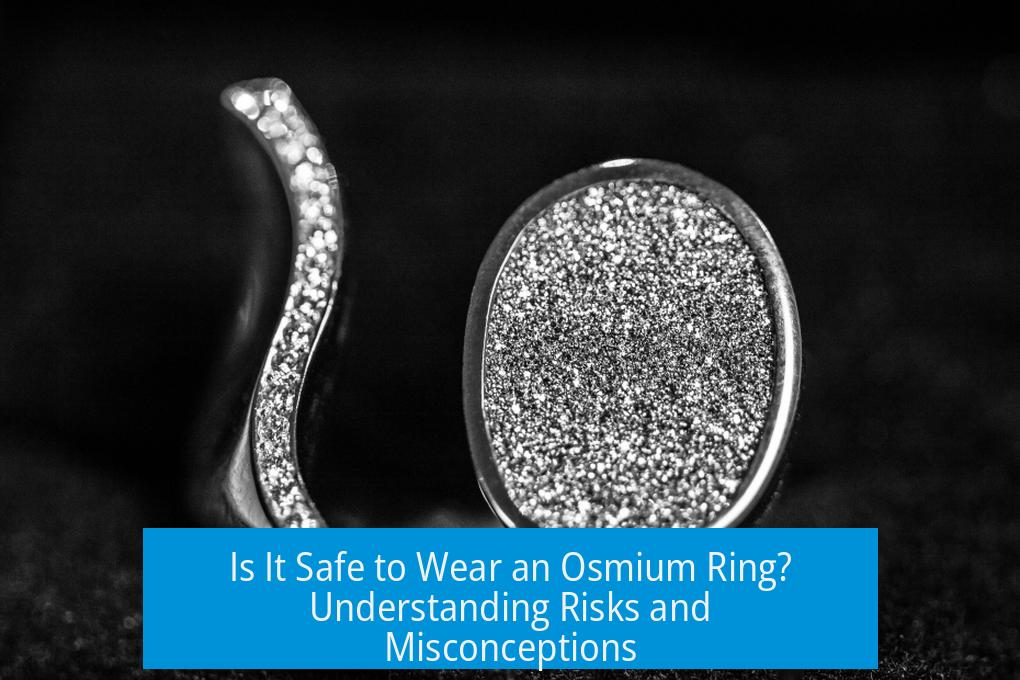
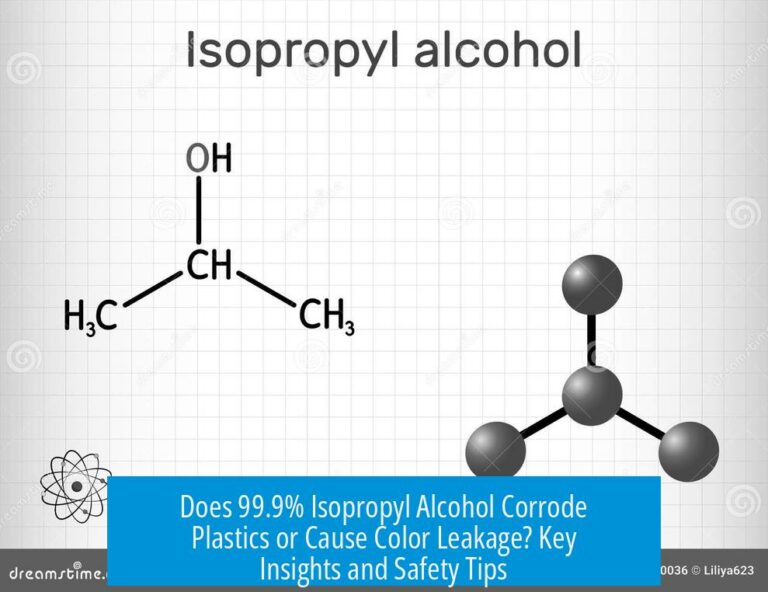

Leave a Comment